As you know, there are only really three options of nailers on the market. You can use a pneumatic, gas or battery nailer. All these nailers have advantages and disadvantages. With pneumatic, you have to carry around a compressor, listen to it fill up and always need some sort of power, plus you have to deal with the air hose. With gas nailers, you have to spend extra money on buying gas, plus some don’t work well when it’s cold outside. Now with battery nailers, while you get to cut the cord and forget about buying gas, they can be less consistent than your other two options. Now I am not talking about going into pine, I am talking about going into harder woods or hitting knots in wood. Sometimes it sinks the nail perfect and other times it leaves it above your work where you now have to go back, grab a punch and sink it to the correct depth. Personally my favorite nailer is the Paslode IM250A LI. While it’s a little heavy, I just love the consistency with it. You can drive nails and it always seems to sink them the correct depth each and every time, no matter what material you are driving into, something I haven’t found in many battery powered nailers. Yes, you have to spend extra money on the gas and if you have a gas cartridge left over, it can expire if you’re not doing another job for a while. But the trade off is worth it. However recently Dewalt came out with their new 20v 16 gauge finisher nailer. I have to admit, I think it gives the Paslode a run for it’s money with consistency. With that said, back in March 2016 Milwaukee Tool said they were coming out with their own version of a cordless nailer based on their M18 platform. So here we are, we finally got the Milwaukee nailer in our hands and here is what we think. Actually we got to try out two of them, the Milwaukee 16 Ga Angled Finish nailer model 2742 and the Milwaukee 18 Ga Brad Nailer, model 2740.
Milwaukee Nailer – General Overview
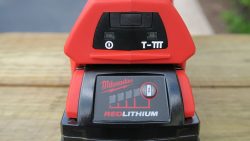 These two nailers have a bunch of traits in common, so instead of double talking about them, I figured it would be much easier to just let you know one time. As you may have guessed these run off their M18 battery platform. Both nailers have the same Milwaukee style grip and rubber overmold on the handle. Both of these nailers are part of their Fuel line which means they run on brushless motors. The brushless motors will give you longer run time and should give you more power. Each tool has a removable belt hook which can also be placed on either side of the tool. The housing is made from an ABS plastic, so it should stand up to the falls and drops of the job site. While we didn’t get the nailers to jam, Milwaukee designed these with a tool less flip up nose piece to clear jams. Just make sure you always take the battery off before you attempt to clear a jam. By the front of the nailer, there is a large knob to adjust your depth of drive. As a last item, both have LED lights to help light up where you are about to fire.
These two nailers have a bunch of traits in common, so instead of double talking about them, I figured it would be much easier to just let you know one time. As you may have guessed these run off their M18 battery platform. Both nailers have the same Milwaukee style grip and rubber overmold on the handle. Both of these nailers are part of their Fuel line which means they run on brushless motors. The brushless motors will give you longer run time and should give you more power. Each tool has a removable belt hook which can also be placed on either side of the tool. The housing is made from an ABS plastic, so it should stand up to the falls and drops of the job site. While we didn’t get the nailers to jam, Milwaukee designed these with a tool less flip up nose piece to clear jams. Just make sure you always take the battery off before you attempt to clear a jam. By the front of the nailer, there is a large knob to adjust your depth of drive. As a last item, both have LED lights to help light up where you are about to fire.
So here are a couple things I like about the Milwaukee Nailer. First, is the on/off button. On the back of the tool, you can depress a single button. Just hold it down for a couple of seconds and the tool will turn on. You will see a green LED light on the left side, which means the tool is on. To turn it off, just hold it down again and the light will go off, meaning there is no more power to the nailer. Once the nailer is on, it defaults to single fire mode. Press the on/off button one time and you can change it from single fire to bump fire. Another cool feature to these tools are the nice large numbers on the magazines. These numbers are easy to read and let the user see how many nails are left in the magazine. Also, you can easily see where the nails are compared to the numbers on the magazine.
While this tool has a ton to like about it, there are some changes I would like to see. The first item is more protection for your surfaces. The housing of the tool is made from plastic. Unfortunately there doesn’t seem to be any protection such as no marring areas that protect the surface for when you lay the tool down. So when you set your nailer down, the plastic is what makes contact with the surface. How many times have you set a tool down only to bump it with your knee across the floor while your doing trim? There are other times you end up accidentally pushing your tool on the surface. Considering this is a finishing tool, the area around you is probably already finished, so you really can’t afford to mess it up. Another item I would like to see is having the gauge of nail and sizes the nailer would take. While it does have it in small lettering on the id tag, there are some of us who can’t see as good as we could when we were in our 20’s. It would be very nice to have this information at our finger tips and be able to see it a little bigger on the side of the magazine. That way when you make the apprentice run to the store, you can give him the correct information. Is this a huge deal? No, because most people will remember the size and gauge of nails. The last item we noticed with these nailers is the amount of feedback. Again, while it’s not huge, you do get feedback from this nailer, a little more than we have seen with other battery nailers. Again, not a huge deal, but working with it all day, you might start to feel it in your hands.
Milwaukee Nailer Performance
I have to say we were impressed with the performance of the Milwaukee nailer. The nailer seemed to be very consistent. While we did get a couple of nails that didn’t sink properly, a majority of them did. Consistency is very important since it’s a huge time saver and stops your clients from looking at you when you end up swearing because of bent nails and nails not sunk properly. Overall this did a great job with sinking them about the same. Loading the nails is a piece of cake and very easy to do. Now I only bring this up because we have tried another manufacturer who we felt it was harder to load nails then it should be. The weight of these nailers aren’t too bad. While they aren’t the lightest we have seen, they are definitely not the heaviest. In fact, they are on the low side of the weight scale, which makes these nailers pretty comfortable to use all day long. The last item is ease of adjusting your depth. To raise or lower your sink height, there is a thumb screw on the front to make the adjustment. This turn screw is pretty consistent. We have tried other manufacturers where you have to fight the adjustment screw. The Milwaukee moves freely and is easy to change.
Milwaukee Nailer – 16 Gauge Angles Finish Nailer – 2742
The Milwaukee nailer 2742 is a 16 gauge angle (20°) finish nailer that allows the user to have zero ramp up time, pretty sweet. The magazine holds 110 nails in the magazine and will take nails from 1-1/4″ – 2-1/2″. The tool weighs 7.2 lbs and has a length of 11.9″. The Milwaukee nailer will fire about 3 nails per second. In regards to run time, you should get about 800 nails per charge with a compact 2 Ah battery and 2,000 nails for their 5 Ah battery. Not a bad days work.
Milwaukee Nailer – 18 Gauge Brad Nailer – 2740
The Milwaukee nailer 2740 is an 18 gauge brad nailer and also has a zero ramp up time. This nailer takes 5/8 to 2-1/8″ nail and has a capacity of 100 nails in the magazine. While the 16 gauge nailer, the nails go in back, the Brad nail loads from the side. As far as weight and size, this nailer weighs 7 lbs and has a length of 11.4″. As with the 16 gauge nailer, this will fire 3 nails per second. With a compact 2 Ah battery, you should get about 1,200 nails per charge and with a 5 Ah battery, it is closer to 3,000 nails per charge.
Milwaukee did a great job with the design of these battery powered nailers. Besides the Dewalt and a select few others, these Milwaukee nailers are constant when firing nails, at least for our trials. To me this is the most important thing, so they hit this one of the head. The next is run time. Again, you can pretty much use these all day on one charge, so another hit. With the Milwaukee nailer being pretty light and compact, that’s a huge plus for those all day jobs or awkward times you are trying to push a nail through something. While you do feel feedback when firing, it’s not a huge deal overall. I would really like to see a little more protection or no mar areas for when you set the nailer down. After all you are doing finishing work with these nailers, so you will be putting them down on certain surfaces that might not play nice with the plastic housing. Overall Milwaukee did a great job with the design of these nailers and I think the contractors will embrace these with joy.

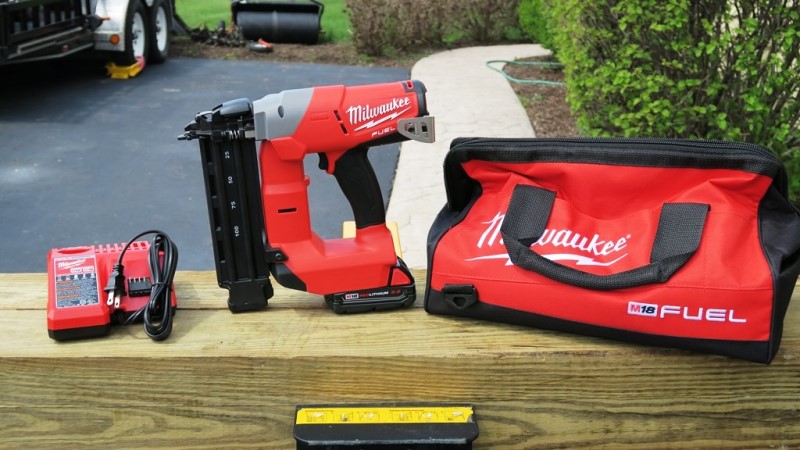

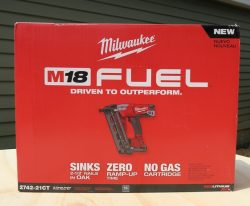
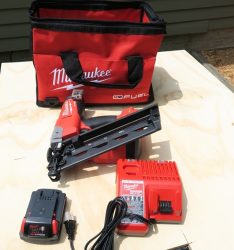
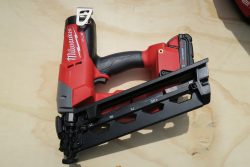
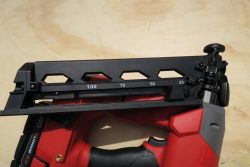
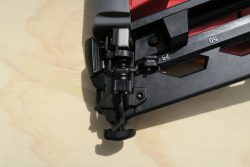
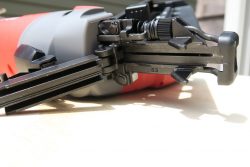
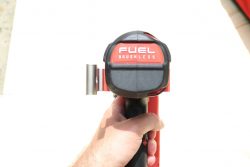
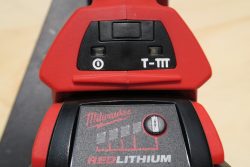
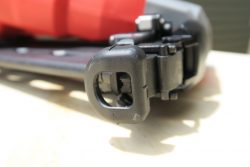
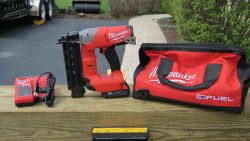
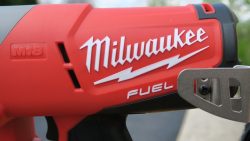
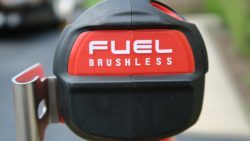
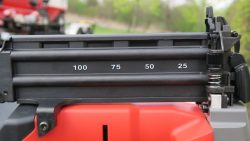
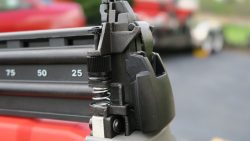
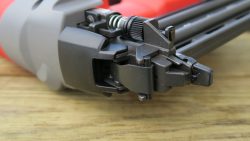
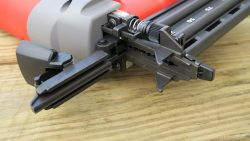
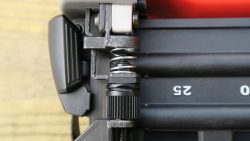
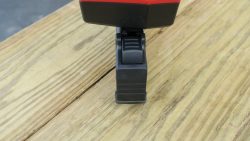
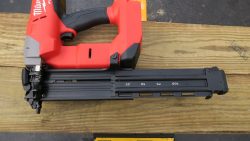
Nice write up! Have you guys got the 15g yet? That is the one I am interested in, I love my 15g pneumatic nailer, cordless would be sweet!
Fantastic article Eric !
Great review with great pictures, it looks like a magazine article, you should consider selling it to a publication.
#TIACREW
I purchased the 2743-20 15ga angled nailer. I love it so far. The feel, the way it works. Nothing that it is a little on the heavy side if you are working over head it may become an issue. But if you’re using it for baseboards or for casements then you couldn’t be more happier. I chose the 15ga because I had a 15ga air nailer and was well stocked in nails. I will not miss the air nailer.
Thanks for the input on these, definitely haven’t found that silver bullet of a cordless nailer yet, but so far with these, I’m hopeful they can really make a difference to someone that needs a cordless option. I’ve been getting a lot of up to date information on these nailers through instagram, and it’s very cool seeing the different experiences with these #tiacrew
Nice article, I like these and appreciate the time you put into these. Also love your videos.
Thanks for the feedback
I’m pleased with my 18 ga. straight nailer . Gave my Pasloade away . No more gas cells , no smell , and quiter . Plus , way less ramp up time , have even used the bump fire function .
Chris